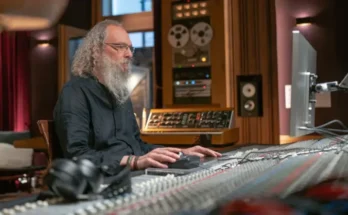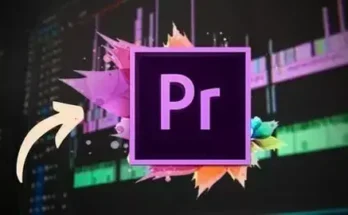How to Play the Violin TUTORiAL
P2P | 25 March 2022 | 4.87 GB
Have you ever been to a wedding where a violinist plays the beautiful, well-known melody from Pachelbel’s “Canon” and thought to yourself, “I wish I could do that”? For most of us, learning to play an instrument from scratch feels out of reach and too intimidating to attempt. But it doesn’t have to be that way.
Now, in the comprehensive 24-lesson course How to Play the Violin, professional musician and instructor Jules Whelpton, from the Youth Arts Academy, will hold your hand step by step through everything you need to know to go from never having held a violin before to performing with confidence. This well-paced series not only covers the basics, but also sets you on the path to having the versatility to comfortably play both popular and classical music on the violin.
From the very first class, you will be picking up your bow and playing real music—some by ear and some by note-reading. Your instructor also utilizes fun exercises she has composed to teach proper technique. By the end of this course, you will be capable of playing musical scales, classical melodies, and even improvisational pieces based in Americana and folk music.
Building Your Basics
Begin by taking a close look at violin anatomy and learning how to pick the instrument that is the correct size for your age and arm length. You will also find out how to care for your violin and determine the proper tools and accessories you will need to do so, such as rosin for your bow, a tuner, and a shoulder rest.
Fundamental aspects of mastering the violin are knowing how to tune your instrument well and how to develop your listening skills to facilitate proper tuning. Jules will walk you through the core steps of using a fine tuner to get your strings ready to play with great sound. Some of the other beginner techniques covered in the first half of the series include
Pitches: Learn to play the musical alphabet by sight as well as by ear. Sight-reading the alphabet requires learning the lines and notations to decipher the music, while playing by ear involves matching and repeating back the pitches you hear. You will use finger tapes at first to memorize the hand and finger positions needed to play each note and then you will progress to playing without them.
Rhythm: Master reading, hearing, and playing note values, such as whole, half, quarter, and eighth notes, as well as how to incorporate the idea of musical rests or moments of silence in your music. Understanding rhythm well is crucial to prepare yourself to tackle the fine art of articulation and complex rhythms like syncopation.
Bowing Techniques: You will start by practicing essential techniques in first position, such as legato (smooth) and staccato (short) bowing. These early bowing styles will further lead to more advanced techniques, such as ornaments like trills and tremolo and chord-playing skills like double-stops and more.
Dynamics: The concept of musical volume changes. Mastery of this is what brings significant artistry to your playing, as dynamics can evoke a myriad of powerful emotions in a listener. One can tell a beginner violinist from a more advanced player due to the range of dynamics the player performs in a piece. Train yourself to recognize and execute the four main dynamics: forte (loud), piano (quiet), mezzo forte (medium loud), and mezzo piano (medium quiet.)
Fiddle Music: Dive into 10th century medieval Europe to educate yourself on the origins of the violin and the fiddle and grasp the difference between the two. You will then use the call and response method to learn the “Swallowtail Jig,” a famous old fiddle melody.
Filling Your Musical Toolbox
Even if you have never played a musical instrument prior to this course, you have probably heard musicians playing scales before.
Scales are not only a great warm-up and skill-building exercise for every musician from beginner to advanced, but they also help determine the key signatures that you play in. Scales are the foundation of Western styles of music with a set order and rules. With Jules’s help, you will accustom yourself to the fundamental major and minor key signatures in Western music.
In the beginning, you will play the scales very slowly for your ear to learn note pitches and to familiarize yourself with the finger positions for each note. As your ear and finger techniques improve, it is vital to increase the speed of your scales practice. Playing scales quickly will prepare your fingers for playing any combination of notes on your instrument at a moment’s notice.
This is why Jules calls scales your “musical toolbox,” as becoming well-versed in them in every aspect will provide the base for everything you will ever need to play in the Western style of music.
Developing Yourself as Musician and Performer
In the latter half of this course, you will be exposed to these and other advanced violin techniques
Playing Arpeggios and Chords. These require bowing on two neighbor strings at once to create harmony.
Vibrato Basics. Learn to use wrist motion to cause a slight fluctuation in pitch to produce a rich and deep tone.
Second, Third, and Fourth Positions. Getting the knack of the higher notes requires your entire left hand to move up and down the board with ease.
Improvisation. Practice your improvisation skills using Americana ensemble music.
You will also be introduced to the concept of “resonant tuning,” which is the art of hearing your strings physically vibrate other strings of similar pitches. Resonant ringing will give you an indication of whether your instrument is in tune as you are playing it. Knowing how to utilize it is a mark of a more advanced violinist. Along with this, you will now take your finger tapes off as you sharpen your ability to play the correct pitches without needing a visual guide.
Using Your Musical Roadmap
With How to Play the Violin, Jules will ensure that you thoroughly grasp every basic concept you need to learn to play any violin piece you would like to on your own. Now, it is up to you to use the roadmap you’ve been given to continually review and practice each technique with patience and dedication so that you can achieve mastery of your instrument. By the end of this course, you will not only be playing Pachelbel’s “Canon” with ease, but you will also be well on your way to performing on any stage, whether solo or in an ensemble!
What Will You Learn?
Take a close look at violin anatomy and discover how to pick the instrument that is the correct size for your age and arm length
Find out how to care for your violin and determine the proper tools and accessories you will need to do so, such as rosin for your bow, a tuner, and a shoulder rest
Discover how to tune your instrument well and how to develop your listening skills to facilitate proper tuning
Learn to play the musical alphabet by sight as well as by ear
Master reading, hearing, and playing note values, such as whole, half, quarter, and eighth notes, as well as how to incorporate the idea of musical rests or moments of silence in your music
Dive into essential bowing techniques, such as legato (smooth) and staccato (short) bowing, then move on to more advanced techniques such as such as ornaments like trills and tremolo and chord-playing skills like double-stops and more
Please REPORT in Comment Broken Links




